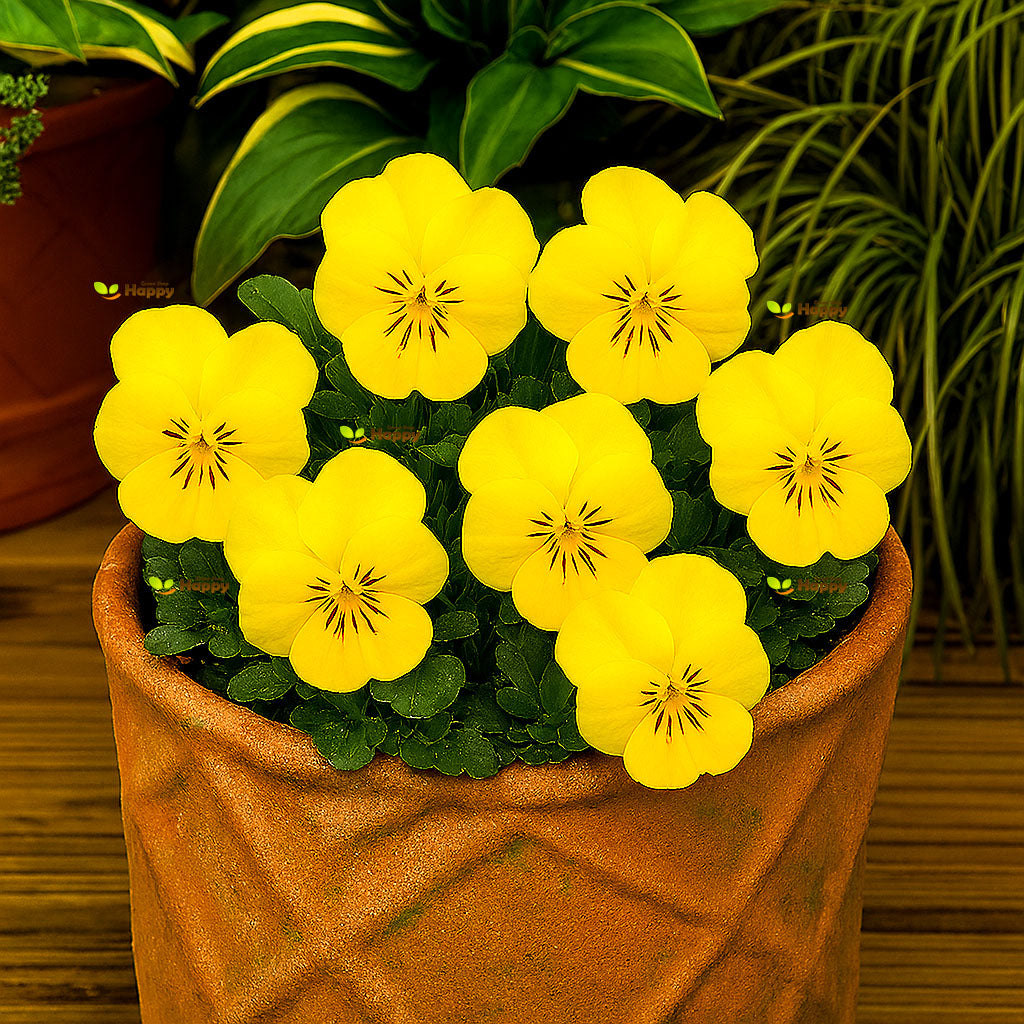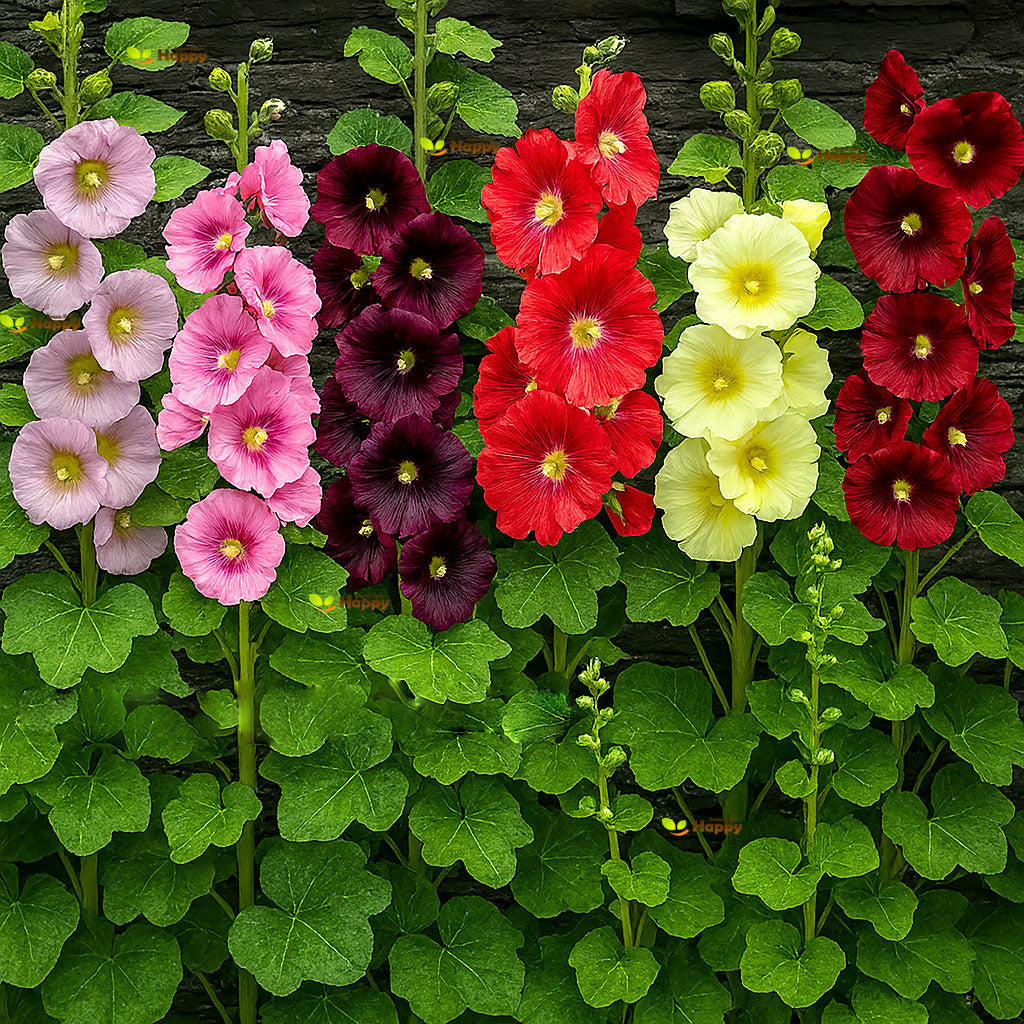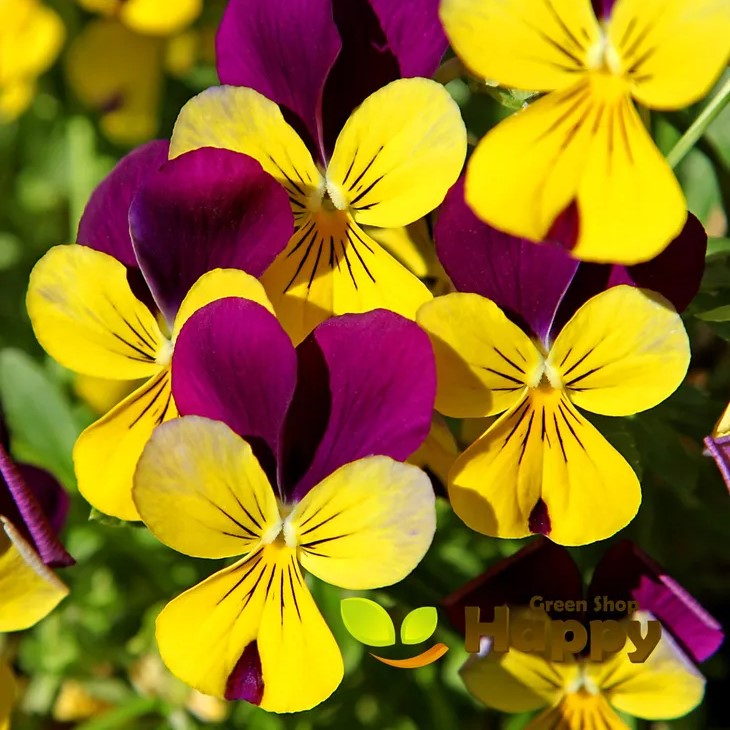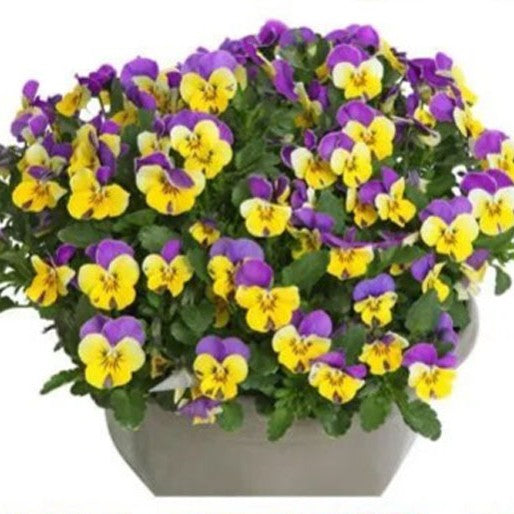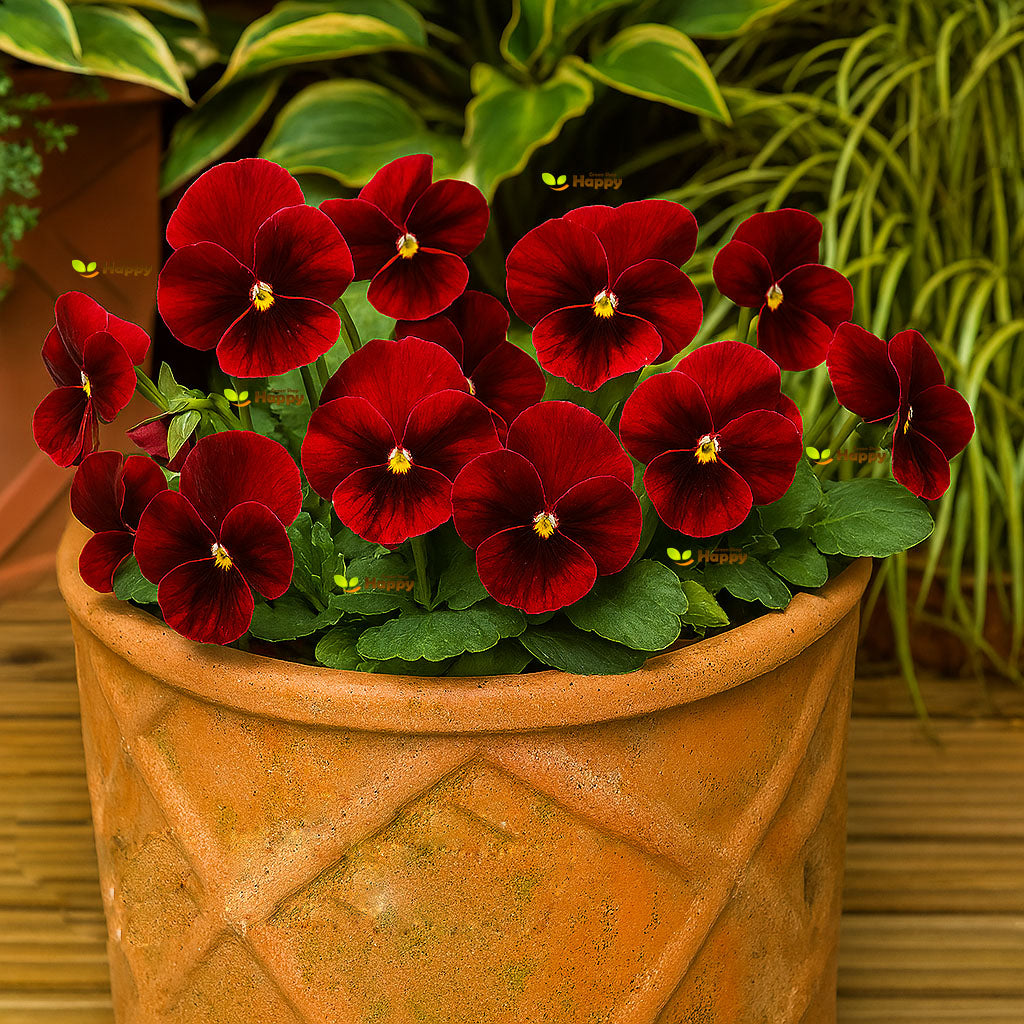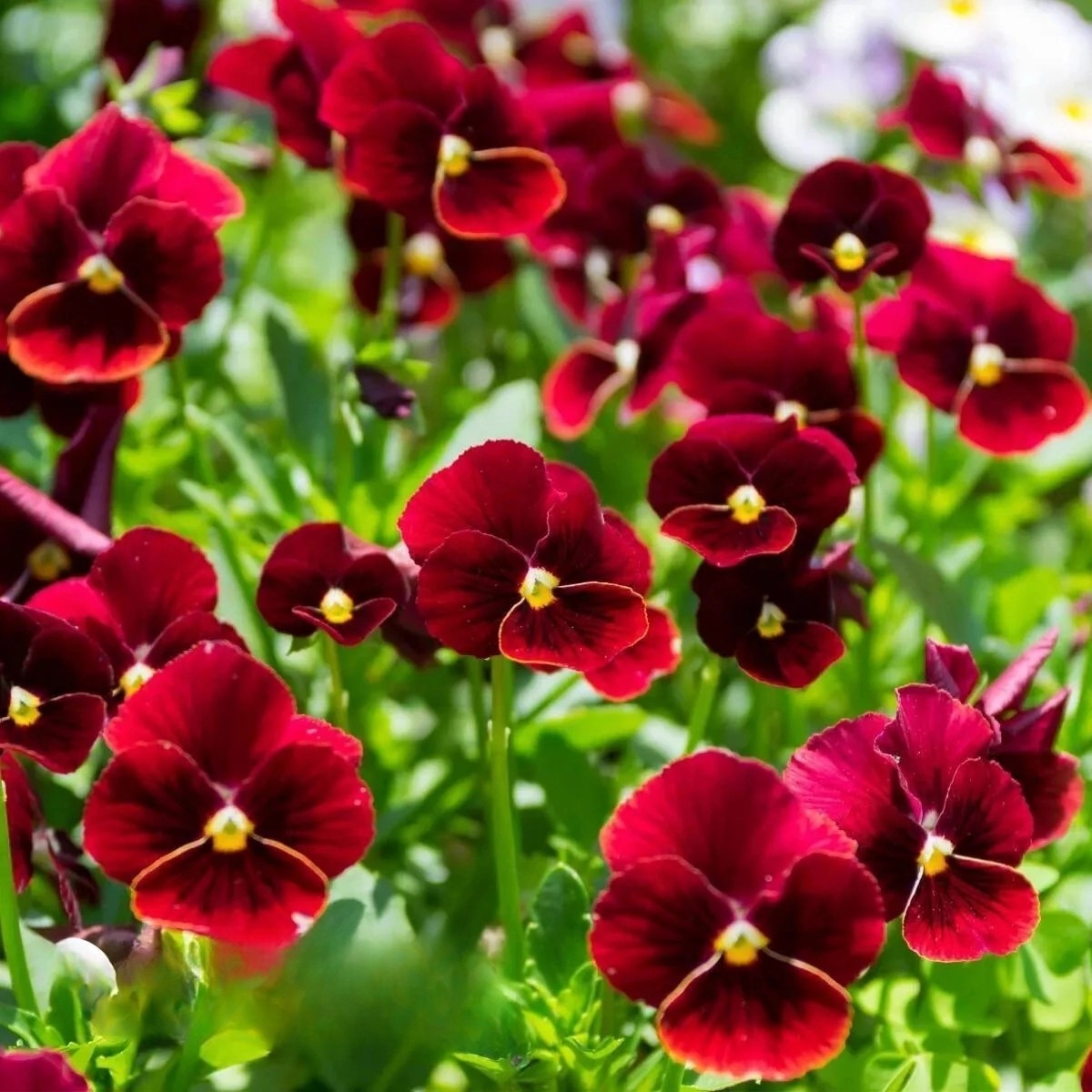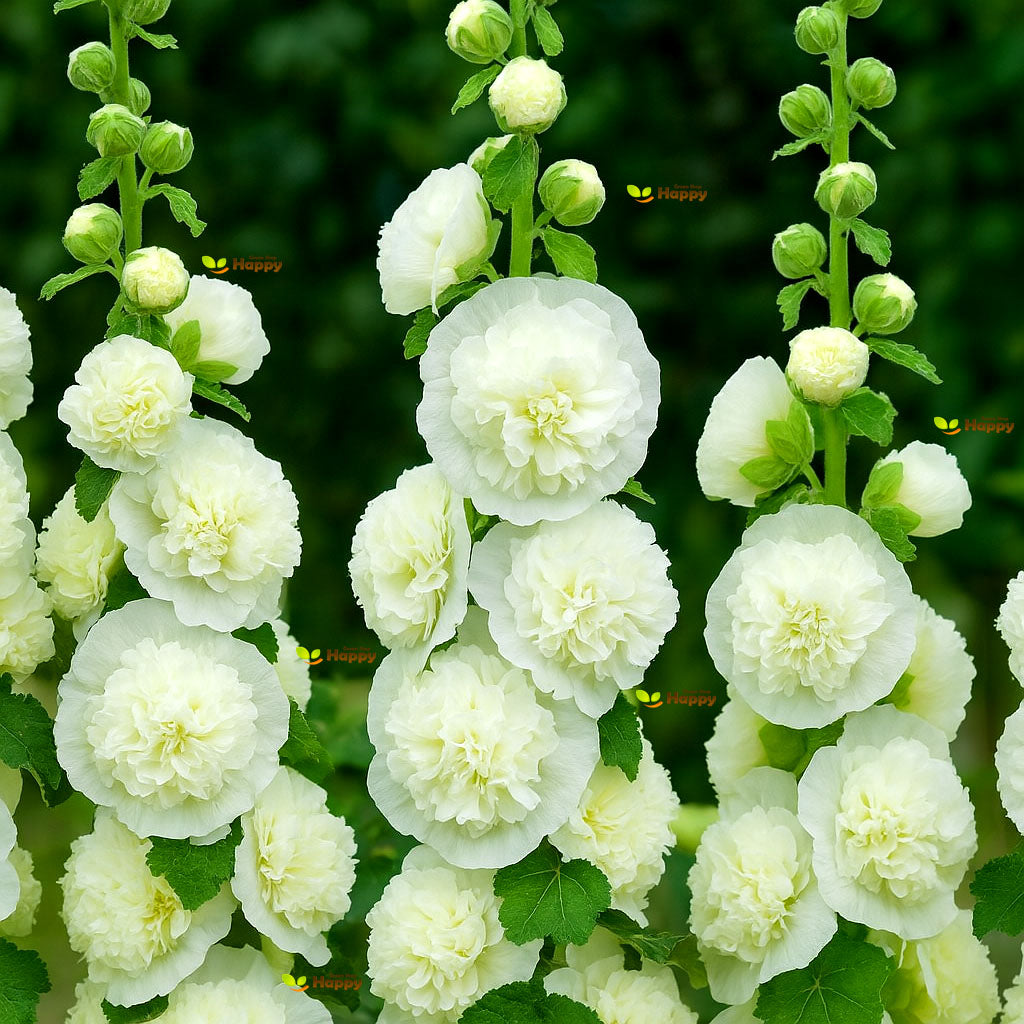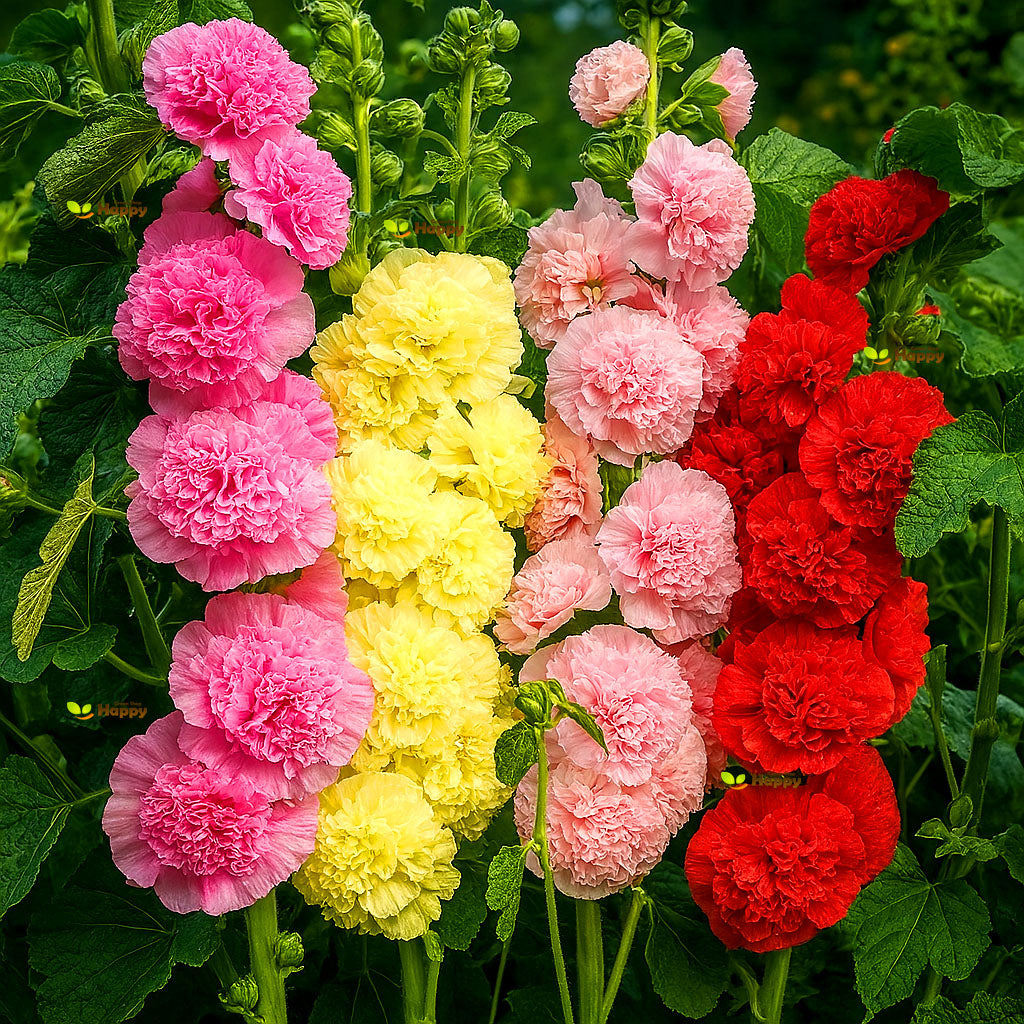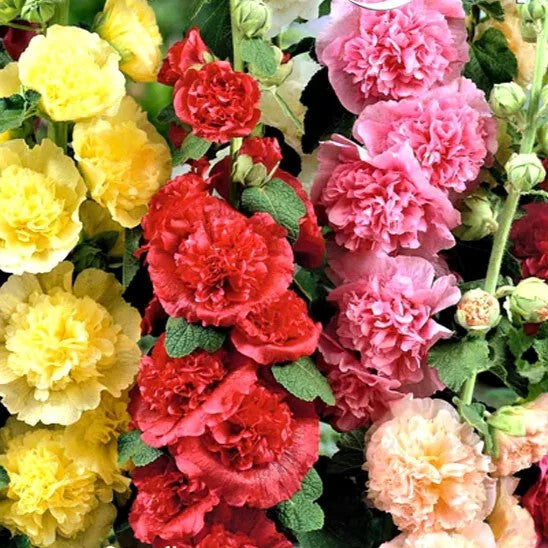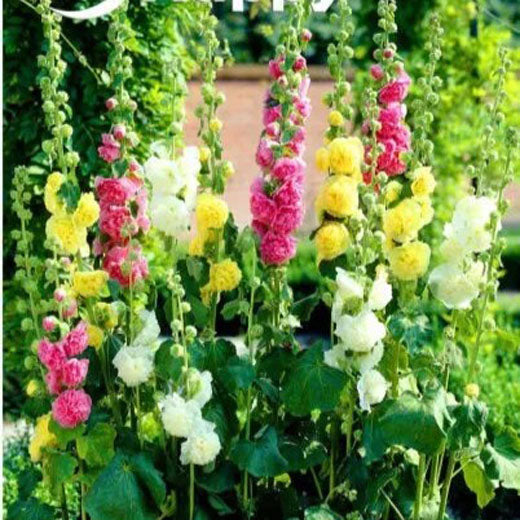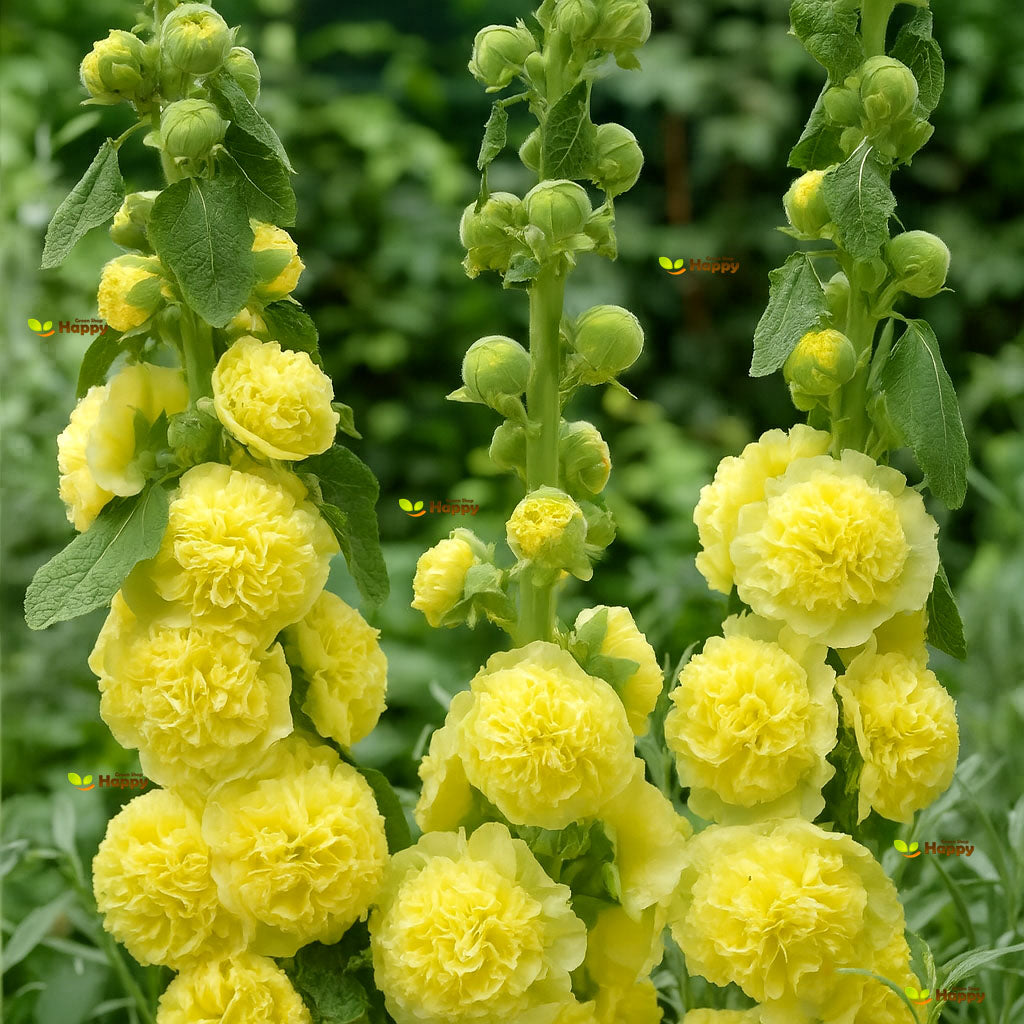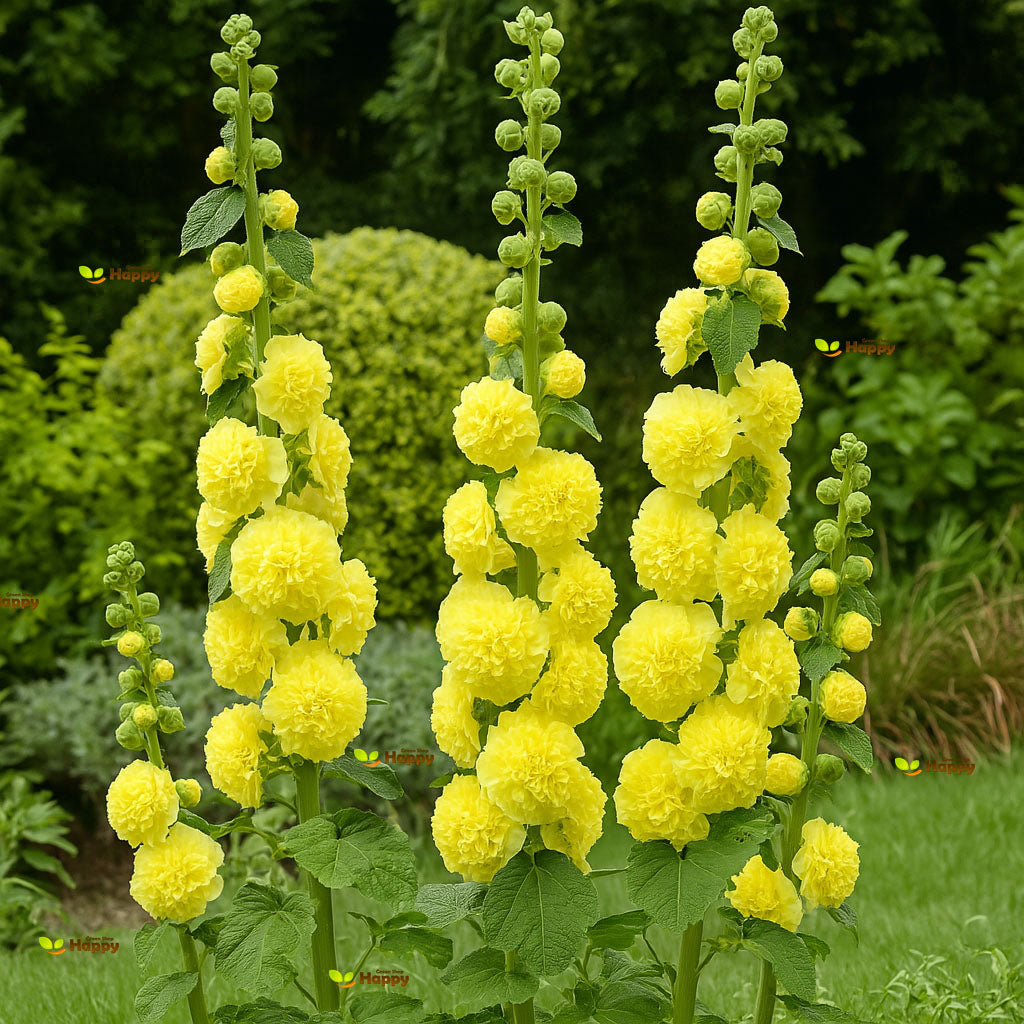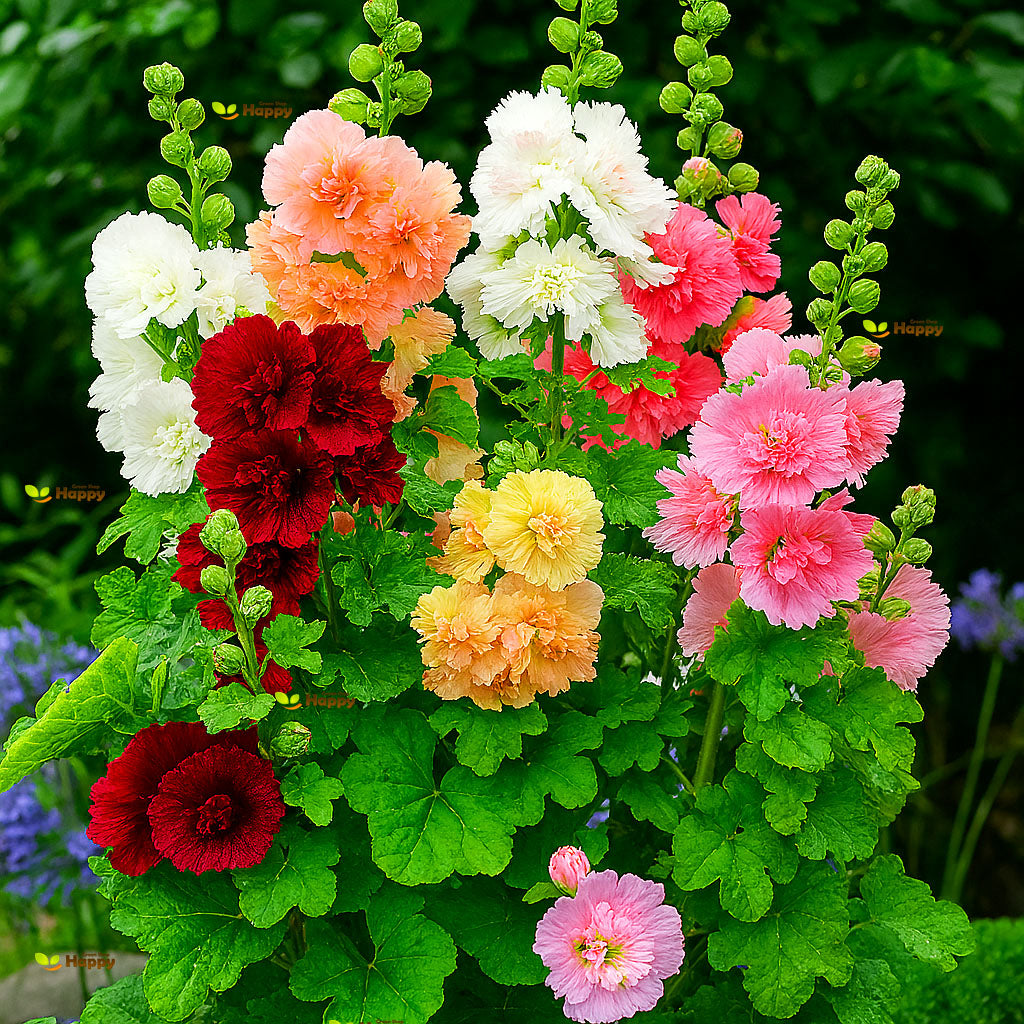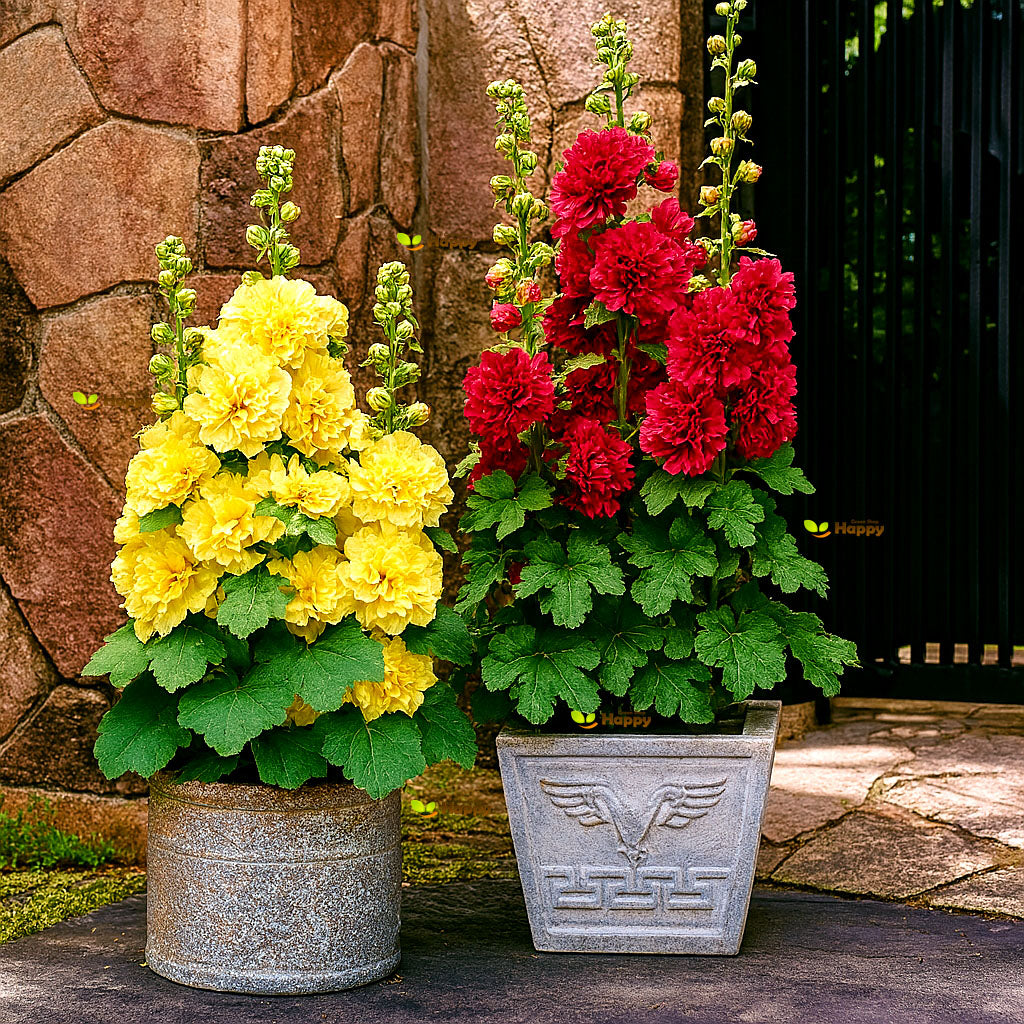Sort by:
56 products
56 products
Horned Pansy 'Prince John' Seeds (Viola cornuta)
The Horned Pansy 'Prince John' is a delightful heirloom variety of Viola cornuta, loved for its charming golden-yellow blooms with subtle shading. Compact and long-flowering, it’s ideal for brightening up borders, containers, and rock gardens with a cheerful splash of sunshine. Hardy and easy to grow, it also attracts pollinators to the garden.
What Makes It Special
-
Distinctive golden-yellow flowers
-
Hardy perennial (often grown as a biennial)
-
Perfect for naturalizing or cottage-style gardens
Key Features
-
Botanical name: Viola cornuta
-
Perennial (treated as biennial in some climates)
-
Height: 15–20 cm
-
Spread: 20–25 cm
-
Flowering: May–September
Ideal For
-
Cottage gardens and naturalized plantings
-
Borders, pots, and rockeries
-
Long-lasting displays from spring to autumn
Sowing
-
Sow indoors: February–April, cover lightly with compost
-
Germination: 10–21 days at 15–20°C
-
Transplant outdoors: after last frost, 20 cm apart
-
Prefers sun to partial shade and moist, well-drained soil
Hollyhock Single Mix – Seeds
(Alcea ficifolia)
Hollyhock ‘Single Mix’ is a robust and reliable perennial, producing tall spires adorned with single, open-faced blooms in a wide range of classic cottage garden colors. Hardy and vigorous, these hollyhocks thrive in borders, along walls, and in naturalistic plantings, adding striking vertical height and charm year after year.
Why Grow Hollyhock Single Mix?
-
Tall flower spikes with a rainbow of single blooms
-
Hardy, vigorous, and long-lived perennial
-
Perfect for adding height to borders and backdrops
-
Traditional cottage garden favorite
Key Features
-
Type: Hardy perennial (sometimes grown as biennial)
-
Height: 150–200 cm
-
Flowers: Summer (second year onward)
-
Position: Full sun
-
Soil: Fertile, well-drained
Ideal For
-
Cottage and traditional gardens
-
Background planting in borders
-
Pollinator-friendly spaces
-
Adding vertical accents to garden designs
Sowing & Growing
-
Sow indoors: March–May in trays or pots at 15–20°C
-
Sow outdoors: May–July directly into prepared soil
-
Germination: 14–21 days
-
Transplant: Grow on and plant in final positions in autumn
-
Care: Provide support for tall stems and remove faded flowers to extend blooming
Horned Pansy 'John Jump Up' (Helen Mount) Seeds (Viola cornuta)
Bring charm and cheer to your garden with the classic Horned Pansy 'John Jump Up', also known as Helen Mount. This historic variety produces petite blooms with vibrant deep violet-purple petals, bright yellow centers, and soft lilac highlights. Perfect for naturalizing, borders, or cottage-style gardens, these hardy perennials bloom freely and reliably.
What Makes It Special
-
Distinctive tri-colored flowers with cheerful faces
-
Hardy, long-flowering perennial
-
Great for borders, containers, and ground cover
Key Features
-
Botanical name: Viola cornuta
-
Perennial (often grown as a biennial)
-
Height: 15–20 cm
-
Spread: 20–25 cm
-
Flowering: May–September
Ideal For
-
Borders, rock gardens, and cottage-style plantings
-
Naturalizing and long-lasting displays
-
Pollinator-friendly gardens
Sowing
-
Sow indoors: February–April, cover lightly with compost
-
Germination: 10–21 days at 15–20°C
-
Transplant outdoors: after last frost, 20 cm apart
-
Prefers sun to partial shade and moist, well-drained soil
Horned Pansy 'Arkwright Ruby' Seeds (Viola cornuta)
Add a touch of elegance to your garden with Horned Pansy 'Arkwright Ruby'. This charming perennial produces velvety deep ruby-red blooms with golden centers, creating a striking contrast. Compact and free-flowering, it’s ideal for borders, rockeries, containers, and bedding.
What Makes It Special
-
Rich ruby-red flowers with glowing yellow eyes
-
Long flowering season from spring into autumn
-
Hardy, compact, and easy to grow
Key Features
-
Botanical name: Viola cornuta
-
Hardy perennial, often grown as biennial
-
Height: 15–20 cm
-
Spread: 20 cm
-
Blooms: April–October
Ideal For
-
Bedding and containers
-
Rock gardens and edging
-
Pollinator-friendly displays
Sowing
-
Sow indoors: February–April or September–October
-
Cover seeds lightly; germination takes 14–21 days at 15–20°C
-
Transplant seedlings to sunny or part-shade positions
-
Flowers the following spring if autumn sown
Hollyhock Chaters Double Triumph White – Seeds (Althaea rosea)
Hollyhock Chaters Double Triumph White is a stunning biennial that produces tall spikes of pure white, double blooms. Its elegant flowers create a classic cottage garden look, ideal for borders, backdrops, and pollinator-friendly gardens. Easy to grow and long-lasting, this variety attracts bees and butterflies while adding height and drama to any garden space.
Why Grow "Chaters Double Triumph White"
-
Tall spikes of elegant, double white flowers
-
Long flowering season adds summer interest
-
Attracts pollinators, including bees and butterflies
-
Perfect for cottage garden style and borders
Key Features
-
Type: Biennial (Althaea rosea)
-
Height: 1.8–2.0 m
-
Flowering: Second year after sowing
-
Position: Full sun
-
Uses: Borders, backdrops, cottage gardens, pollinator planting
Ideal For
-
Creating dramatic vertical interest in borders
-
Cottage and mixed garden designs
-
Pollinator-friendly planting
-
Gardeners seeking classic, easy-to-grow hollyhocks
Sowing & Growing
-
Sow indoors: January–March
-
Sow outdoors: Directly in soil April–May
-
Germination: 14–21 days
-
Plant out after last frost, spacing 45–60 cm apart
-
Prefers full sun and well-drained soil
Hollyhock ‘Chaters Double Triumph Mix’ Seeds (Althaea rosea)
A true cottage garden classic, the Hollyhock ‘Chaters Double Triumph Mix’ produces tall, stately flower spikes adorned with large, fully double blooms in a rich blend of colors – from soft pastels to vibrant shades. These majestic perennials (often grown as biennials) create a dramatic vertical accent at the back of borders, alongside walls, or in wildflower-style gardens.
What Makes It Special
-
Stunning double blooms in a wide range of colors
-
Impressive tall spires up to 1.8–2.5 m high
-
Attracts bees, butterflies, and pollinators
-
A long-standing favorite in cottage and traditional gardens
Key Features
-
Botanical name: Althaea rosea
-
Common name: Hollyhock Chaters Double Triumph Mix
-
Seed count: Approx. per pack (customizable)
-
Height/Spread: 180–250 cm tall, 50–60 cm spread
-
Position: Full sun; well-drained fertile soil
-
Flowering period: July – September (second year from sowing)
-
Lifespan: Hardy biennial/perennial
Ideal For
-
Cottage and traditional garden borders
-
Planting against walls and fences
-
Pollinator-friendly gardens
-
Creating dramatic vertical height in displays
Sowing Instructions
-
When to sow: Indoors March–May or directly outdoors May–June.
-
How to sow:
-
Sow seeds thinly in trays or pots of moist seed compost, cover lightly.
-
Keep at 15–20°C for germination (14–21 days).
-
Transplant seedlings when large enough, spacing 45–60 cm apart.
-
-
Care: Provide support in exposed areas. Deadhead faded flowers to encourage further blooming.
Hollyhock ‘Summer Carnival’ Double Mix Seeds (Althaea rosea)
Hollyhock ‘Summer Carnival’ is a striking biennial with tall spikes of fully double, ruffled blooms in a vibrant mix of colors. Blooming from mid to late summer, it adds drama and vertical interest to borders, cottage gardens, and pollinator-friendly spaces. Hardy and easy to grow, it attracts bees and butterflies while creating a stunning floral display.
What Makes It Special
-
Fully double, ruffled blooms in a vibrant color mix
-
Tall, dramatic flower spikes ideal for vertical accents
-
Attracts pollinators and adds cottage garden charm
Key Features
-
Botanical name: Althaea rosea
-
Biennial
-
Height: 150–200 cm
-
Bloom time: Mid to late summer
Ideal For
-
Borders and cottage gardens
-
Pollinator-friendly plantings
-
Backgrounds, vertical accents, and cut flowers
Sowing
-
Sow indoors Feb–Apr or outdoors Apr–Jun
-
Cover seeds lightly with soil
-
Germination: 14–21 days at 18–22°C
-
Space seedlings 40–50 cm apart
-
Flowers the following year
HOLLYHOCK ‘CHATERS DOUBLE YELLOW’ SEEDS (Althaea rosea)
Add towering elegance and cheerful color to your garden with Hollyhock ‘Chaters Double Yellow’. This classic biennial produces large, double yellow flowers on tall, sturdy stems, creating a stunning vertical display in borders and cottage gardens. Easy to grow and long-flowering, it attracts pollinators while enhancing garden charm.
Why Grow "Chaters Double Yellow"
-
Large, double yellow flowers
-
Tall, sturdy stems for vertical impact
-
Long-flowering and low-maintenance
-
Attracts bees and butterflies
Key Features
-
Type: Biennial (Althaea rosea)
-
Height: 150–200 cm
-
Flowering: Summer (June–August)
-
Position: Full sun
-
Uses: Borders, cottage gardens, tall displays, pollinator-friendly
Ideal For
-
Adding height and color to garden borders
-
Cottage and informal garden designs
-
Attracting pollinators
-
Cut flowers for arrangements
Sowing & Growing
-
Sow indoors: 6–8 weeks before last frost
-
Sow outdoors: After frost danger has passed
-
Germination: 14–21 days
-
Space seedlings: 40–50 cm apart
-
Full sun and well-drained soil for best flowering
Hollyhock ‘Majorette Double’ Mix – Seeds (Althaea rosea)
The Hollyhock ‘Majorette Double’ Mix is a stunning dwarf variety producing fully double flowers in a wide range of colors, including pink, red, yellow, and white. Compact and bushy, it is perfect for smaller gardens, borders, and containers while still giving that classic cottage garden charm.
Why Grow ‘Majorette Double’?
-
Fully double blooms in a vibrant color mix
-
Shorter, dwarf habit compared to traditional tall hollyhocks
-
Long summer flowering season
-
Attracts bees and pollinators
Key Features
-
Type: Half-hardy biennial (often flowers in the first year)
-
Height: 60–80 cm
-
Flowering: June–September
-
Position: Full sun, well-drained soil
-
Uses: Borders, containers, cottage garden plantings
Ideal For
-
Smaller gardens and courtyards
-
Adding vertical interest without excessive height
-
Pollinator-friendly spaces
Sowing & Growing
-
Sow indoors: February–April in trays or pots
-
Sow outdoors: May–June directly in soil
-
Germination: 14–21 days at 18–20°C
-
Transplant seedlings 40–50 cm apart
-
Deadhead faded flowers for extended blooming
Showing 36/56




